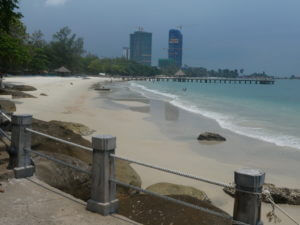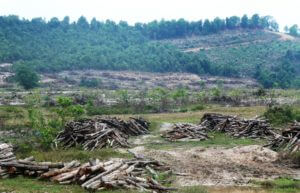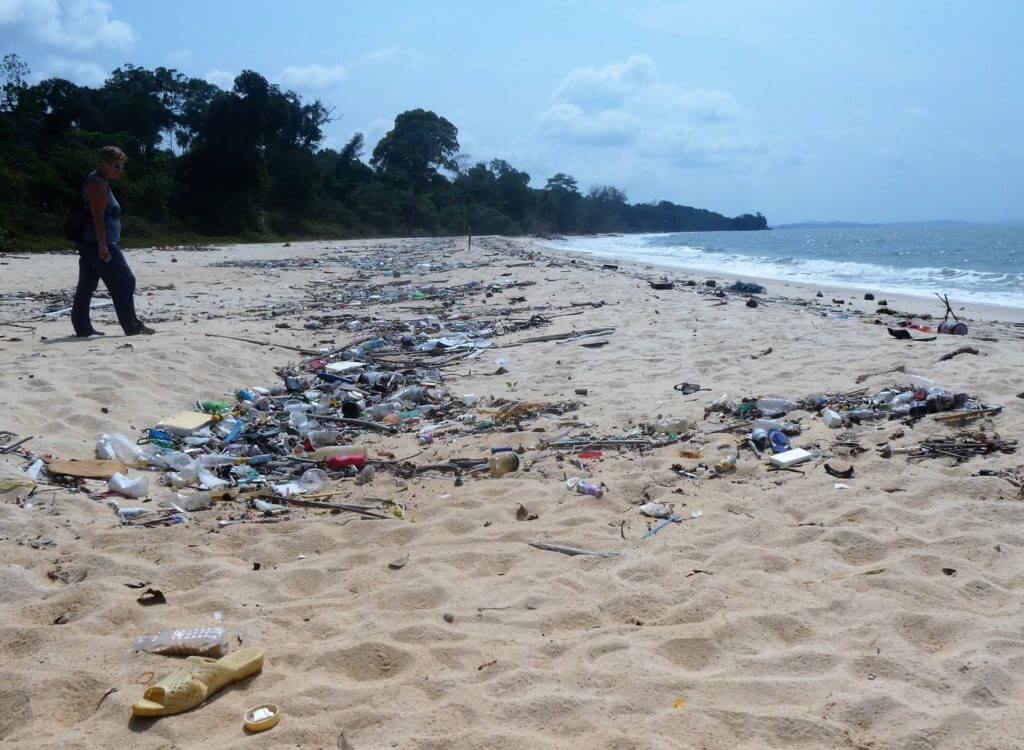I have travelled to the coast of Cambodia in Sihanoukville province for a short Easter break and have come face to face with the very ugly side of development which is taking place in this region. Sihanoukville and the coast running down to Kampot and Kep are tourist magnets because of the pine-fringed, silver strands – the warm, turquoise waters of the Gulf of Thailand offer wonderful snorkelling and fishing over stunning coral reefs. There are 155 species of bird listed for Ream National Park. It is paradise for anyone with an interest in nature.

The beauty of the area has attracted people here but the developments taking place now are systematically destroying the local environment of paddy fields and lotus farms not to mention tropical forest and national park. In the villages, development appears haphazard; horrendous strip development along the main roads, consisting of little shops and restaurants and within the villages themselves, hippy style shacks, cabins and bungalows – anything goes.This all caters to the dreadlocked, tattooed travellers looking for a cheap dorm for the night and a burger or even fish n’ chips.

At the other end of the scale are the massive hotel and casino complexes being built along the coast with insufficient infrastructure such as roads, sewage or waste management systems to support them.
Reading an article in the South East Asia Globe of 6 November 2017, a World Bank report in 2014 stated that the construction industry has become one of Cambodia’s four economic pillars and overtaken agriculture and tourism as the second largest driver of growth. The value of approved construction projects doubled in 2016 to $8.5 billion and the boom is funded by massive investment from outside – 70% of industrial investment comes from China. The Chinese investment is very attractive as it comes without the conditions imposed by the US or the World Bank with regard to political transparency or human rights.

There is also a “special” relationship between Cambodia and China and Cambodia is one of the belt and road countries. The belt and road initiative is a proposal put forward by China’s president Xi Jinping in 2013. Its aim is to unite the countries along the old silk road and the maritime silk route by strengthening infrastructure links such as roads, bridges, pipelines, ports etc. It is a massive project by any standards and estimates are that 68 countries are involved, 65% of the world’s population and 40% of global GDP (2017).
Do these construction projects really address Cambodia’s needs? Building luxury hotels and apartment blocks is not solving the rural housing problem nor the housing needs of the average Cambodian. Cambodia’s lack of infrastructure is hindering development and needs to be improved to support future growth. Roads are poor, there are insufficient drainage or water treatment systems and little waste management – it seems that the country’s needs are not necessarily the priority of project investors. Indeed, Japan used to be the largest partner in Cambodian development but now concentrates on supporting projects that will aid and support long term development such as deep-water ports and improving international road links between the capital, Phnom Penh and the surrounding countries of Thailand and Vietnam.
There are a number of concerns:
- Is this level of investment sustainable?
- What will happen when the Chinese money dries up?
- Who is monitoring the impact on the environment?
I don’t have the answers but it is deeply disturbing to see this destruction of habitat on such a huge scale.

©Copyright overthehils.com 2018


Yes Hilary it is wonderful to see these beautiful places but it also opens the eyes to the scary things that are happening all around the world with Chinese money. You have written such an informative concise report again. Thank you.
I was so appalled at the scene on the coast and local residents told me that the changes had taken place over a very short space of time. The problem is that this kind of environmental damage is irreversible and I have seen no evidence of any environmental impact studies. The rangers in the national park nearby were not informative and the official park website is taken up with selling hotel rooms! All very perplexing but I am going to have a talk to friends at the Cambodian Bird Guide Association and see what they know.